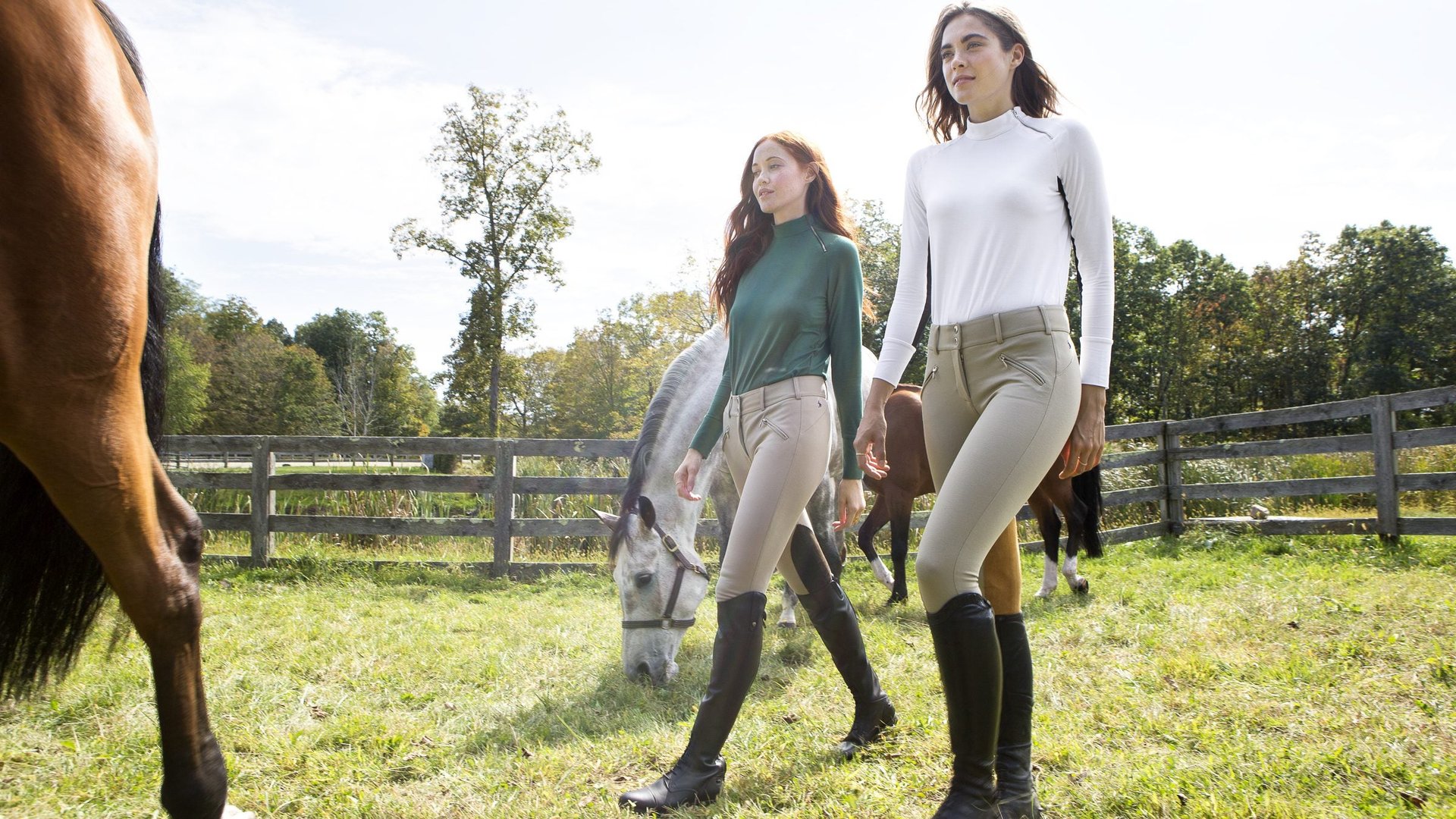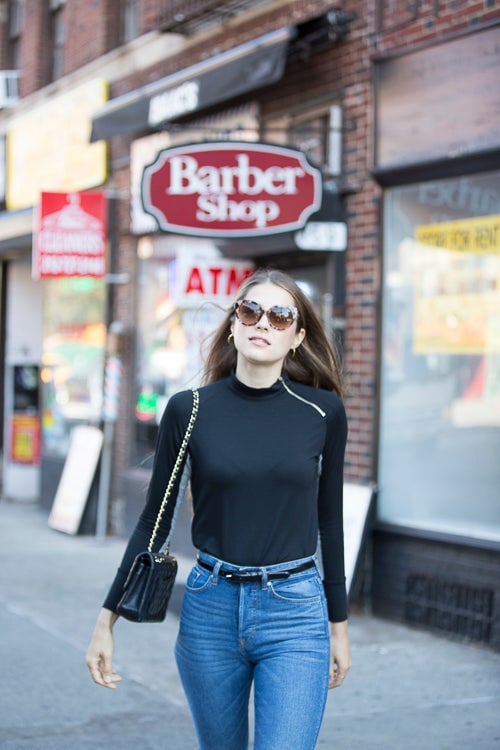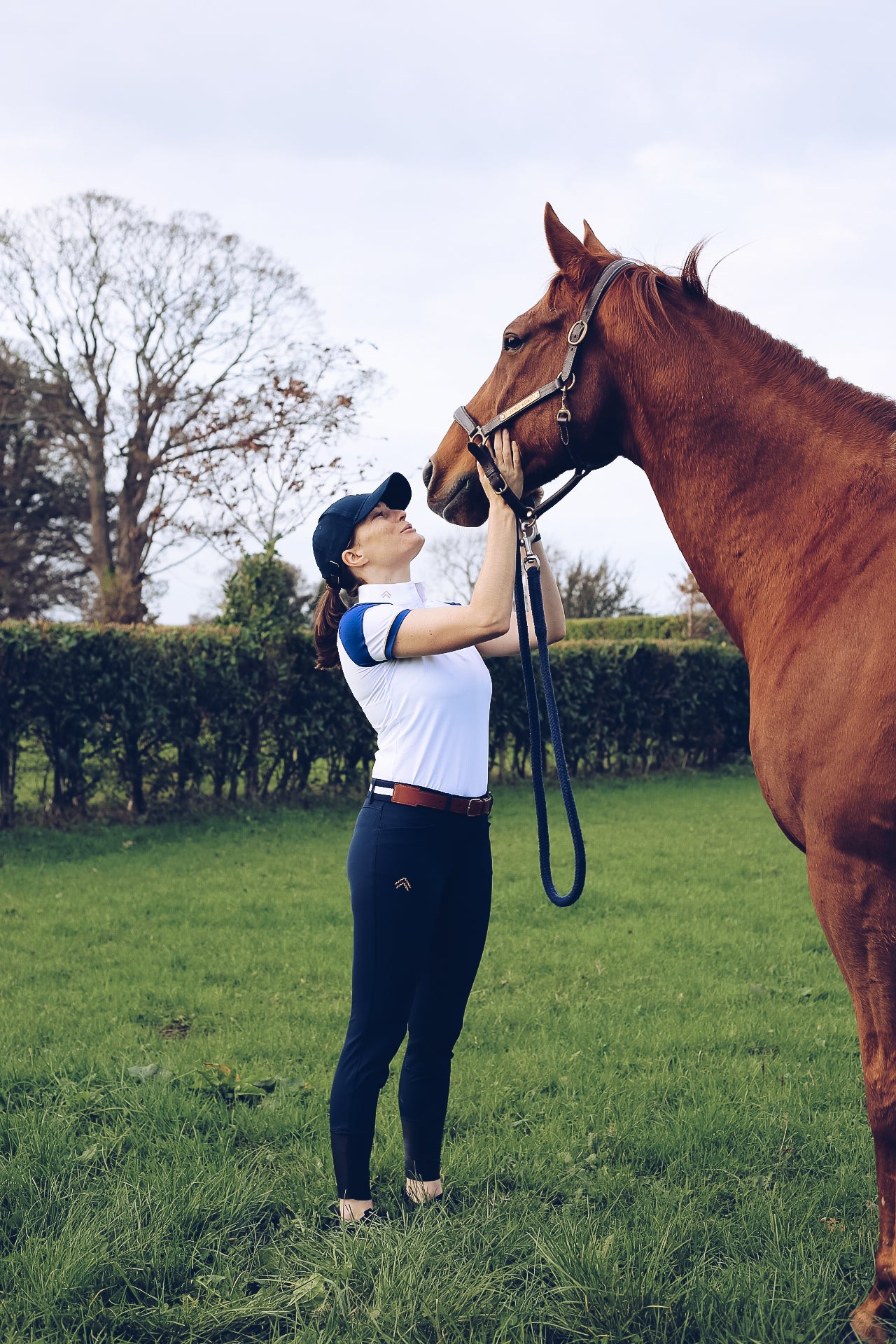Riding gear is the original athleisure
Before French fashion house Hermès was renowned for the Birkin bag and silk scarves, it was known for making harnesses and bridles for European aristocracy and their horses in the 1800s. In 1900, the label began selling a bag designed for holding saddles—and in 1922, the first collection of women’s handbags was released. But though Hermès continues to make and sell riding gear from chaps to stirrups to saddle balm, most of its profit comes from handbags. You can wear head-to-toe Hermès without having ever seen a horse in real life. Yet, the brand still adheres to its equestrian heritage, as evident in the horse in its iconic logo.


Before French fashion house Hermès was renowned for the Birkin bag and silk scarves, it was known for making harnesses and bridles for European aristocracy and their horses in the 1800s. In 1900, the label began selling a bag designed for holding saddles—and in 1922, the first collection of women’s handbags was released. But though Hermès continues to make and sell riding gear from chaps to stirrups to saddle balm, most of its profit comes from handbags. You can wear head-to-toe Hermès without having ever seen a horse in real life. Yet, the brand still adheres to its equestrian heritage, as evident in the horse in its iconic logo.
But even though the riding lifestyle has inspired countless designers and brands, actual riding gear for serious riders is stereotyped to be stuck back in the 1800s. “[H]orsey clothes are NOT cool,” Netia Walker wrote at Tatler. “I don’t want to end up looking like a happy hacker in purple breeches with hearts on them or a fluorescent logo coat, nor do I want to be decked out in bulky tweed.” Now, a new direct-to-consumer brand called Free x Rein is making functional riding gear using modern technical fabrics and millennial-friendly designs—like a bodysuit—to be from the stable to brunch.

Free x Rein co-founders Dana Schwartz and Andrea Hippeau Vogel had been competitive riders almost their entire lives. Like many riders, they knew that their riding clothes were uncomfortable, but they didn’t have many other options. “The aha moment was when we were riding with a women in her 30s and she told us she was wearing Spanx under her breeches,” Vogel explained on the phone. “At that point, we were like, no one else is doing this.”
The two New York City professionals realized that while traditional athletic gear was becoming everyday fashion known as “athleisure,” equestrian fashion was not getting the same treatment. There are bodysuits (unheard of in the riding world) made of jersey fabric meant to be worn under breeches or a pair of jeans, the Signature Ponte Riding Pant meant to be worn like leggings, and the flattering Derby Riding Pant—specially designed for the woman who feels that she needs to wear Spanx. “I took a five-day trip and wore a bodysuit half the time,” Schwartz said. “We’re really obsessed with this.” Tomorrow, Free x Rein, which just launched, will be heading to the 2018 Winter Equestrian Festival in Welllington, Florida, to reach out to competitive riders who may have been loyal to the same brands since childhood.
Historically, riders have not considered themselves athletes, though equestrianism has been a sport at the Olympics since 1900. “I think riders have been hesitant to call themselves athletes because amongst onlookers and non riders, there’s a preconception the rider being a passenger, merely steering while the horse does all the hard work,” explained professional dressage competitor Tatiana Mountbatten. When she meets a skeptic of the athleticism of horseback riding, she likes to offer them a quick lesson on one of her horses, to prove “just how physically demanding it is to control these animals.”
“We’re so used to putting our horses’ needs first that we don’t even think of our own needs,” Alex Calder, an Irish writer who spends as much time as possible with her thoroughbred horse, Ben, added. “We’re educated as children that the welfare of your horse or pony is paramount—which is also very connected to every rider’s guiding principle that we never blame the horse, the horse is never at fault, if something goes wrong, it’s your fault.”
While the riders ignore their own body ailments, the horses will get Reiki, kinesiology, crystal treatments, massages, and physical therapy. Calder started Pilates about a year ago, and wishes she had started earlier, as it has helped her become a better rider. Mountbatten points to Danish rider Cathrine Dufour, who has 109K Instagram followers, as an example of a rider who cross trains in a traditional gym and shares her workouts with the riding community.
With so much focus now placed on wellness, Free x Rein isn’t the only brand getting into the equestrian-meets-athleisure market. 127-year-old English heritage brand Harry Hall just launched a new collection designed in collaboration with Martha Sitwell, a former model who was once the face of Royal Ascot. Though the collection is inspired by the nipped waist silhouettes of 1940s Dior, there are modern developments for the modern women, too. “No one has a man driving your lorry to the meet for you, so there is a zip up invisible pocked in the breeches for your keys,” Lucy Higginson, the editor at Harry Hall explained over email. “And the underside of the jacket collar has a thick strip of reflective fabric there, so if you’re hacking home in the gloom at 4pm and you turn your collar up, there is a little bit of safety protection there.”
Equestrianism and its association with the aspirational upper classes—and the reality of the expensiveness of riding gear and, well, maintaining a horse—has long been a fashion trend embraced by non-riders. The jodhpur (or riding pants or breeches or britches), which was invented in India to allow for freedom of movement during riding before stretchy technical fabrics existed. It became popular in the 1920s as women stopped riding sidesaddle, which allowed for skirts. (Sidesaddle is still done today, but it is niche.)
Gabrielle “Coco” Chanel, a former poor orphan who refused to dress women in corsets and other restrictive garb, wore jodhpurs when her lover, French millionaire Étienne Balsan, introduced her to equestrianism. In 1967, Ralph Lauren, a master of creating the preppy American aesthetic who grew up as a working class Jewish kid from the Bronx, launched his ubiquitous Polo Ralph Lauren collection, though he had never stepped foot onto a polo field. Lauren was onto something: Veuve Cliquot sponsors a celebrity-filled polo match every year, and polo is now the preferred sport of Chinese billionaires.

“I think there’s a sense of beauty, bravery and elegance associated with the riding lifestyle,” Calder explained. “So there’s a deep history and heritage attached to traditional equestrian style, and a certain amount of carefree romanticism, which I think is very appealing, especially in a world where so much of what we create is intangible.”
Still, the day-to-day wear for serious riders is less fashion-forward and dreamy. Though Calder loves the new Harry Hall collection due to her childhood participating in hunter pony competitions, her go-to brands are Horseware, which uses technical fabrics while maintaining a traditional aesthetic, and Sakkara for their microfiber breeches. Mountbatten prefers athletic tops by Nike and Kastel (the latter of which she is a brand ambassador, and whose shirt she wore for 1000 kilometers across Mongolia in the longest horse race in the world).
Currently, her favorite breeches are Ariat Olympia Knee Patch Breeches, which she bought six years ago. “I don’t know what I’m going to do when one day they break,” she said. She’s tried everything else. The only riding brand she would wear while not riding is Miasuki, a Hong Kong- and Milan-based label that sponsors her.
But though riding and fashion are integral to their lives, Calder and Mountbatten note that real riders—as opposed to those who just want to dress like them—would never wear their riding clothes to brunch. “The thing with horse sport versus normal sport is that as well as your own sweat, there’s also the general aroma of horse to contend with, and while horse people love it, most other people do not, so your yard clothes don’t transition as well as normal sportswear might,” Calder said. “I’d never go out in the clothes I had just ridden in,” Mountbatten added. “This is why riding clothes, unlike gym kit, can’t become ‘activewear’. The clothes you wear to the yard inevitably get covered in dirt and smell like horse. It’s just unavoidable.” The distinguishing mark of a serious rider just might be mud—not a perfect outfit.